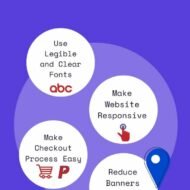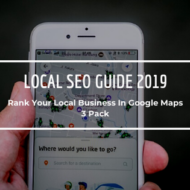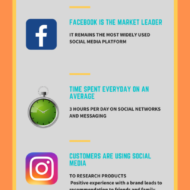Currently Browsing: SEO
Posted by Managementguru in How To, SEO, Strategy, Website Design
on Apr 22nd, 2021 | 0 comments

These days, search powers the internet and having a website that is search-engine friendly and capable of ranking high is essential if you’re to be found by potential clients or customers. Search Engine Optimization (SEO) is the practice of optimizing a site to rank higher in the search engine results pages. In truth, SEO is a highly detailed and involved process, but there are still some small changes you can make to your website and site content that could see you enjoying better results in a relatively short time. DIY SEO vs hiring a specialist digital marketing agency While there are some tricks you can employ that may help you achieve better rankings in the short-term, if you hope to achieve the best results you should really look at outsourcing to a third-party professional digital marketing company. Achieving high rankings can take a frustratingly long time if you don’t know what you’re doing – and, even if you manage to get good rankings, there’s also absolutely no guarantee of staying high up in the coveted result pages of Google and others. Also, if you don’t know what you’re doing, there’s an equal likelihood that you’ll harm rather than enhance your ranking. If you’re in any doubt, you should think about enlisting the help of a professional firm like Flyrise that will align your business’ website with its top keywords and execute a plan to get you ranking for them. Simple tactics you can do that will help your rankings All that said, there are still various things you can do yourself that should have a positive impact on your rankings – and will also make the job of a digital marketing company considerably easier should you decide to work with one. Develop a list of keywords and phrases likely to be used by your clients (potential and existing): You know your business and market better than anyone, so you should also have a pretty clear idea of what terms or phrases people might type in to find a firm like yours. Developing a list of possible keywords and phrases will help you populate your pages with words people are likely to use when they search – greatly increasing your chances of Google registering and delivering your content under these terms. Give prominence to your keywords: You will likely be using some form of Content Management System (CMS) so, when you’re titling your page and adding a header, think about the keywords that relate directly to that content and include them in both. Also, you should split your main page content into headers – again featuring these keywords liberally. Remember not to go over the top and start throwing words in repeatedly where they aren’t required or don’t make sense, which is considered spamming. Google’s spiders are now incredibly sophisticated and aim to ‘read’ a site’s content much as a human would. In fact, its bots are now so smart they can recognize poor grammar and structure – which, in turn, Google uses to prioritize pages in listings. Keep sentences short and split long paragraphs: As mentioned, Google now attempts to ‘read’ content and is increasingly frowning upon overly long sentences and paragraphs. Reading long reams of text is tiring on the eyes, and Google knows this. So keep your text concise and to the...

Posted by Managementguru in Business Management, How To, How to make money online, Marketing, Sales, SEO, Strategy
on May 9th, 2020 | 0 comments

The success of your eCommerce website is usually pegged on whether customers can buy the products they need quickly and efficiently. If there are any hiccups in this process, customers are likely to leave and you will lose a sale. To ensure this does not happen, it pays to improve your customer experience. This has the add-on effect of increasing sales and profits. Below, we will look at a few things you can do to improve your e-commerce website. Use Clear, Legible Fonts Even though most e-commerce websites are not text-heavy, people still need to read descriptions, directions, and texts like on your privacy page. Improvements in this area come from selecting the right font. You want a font that is not too thin or bold, one that is not too fancy, and one that is easy on the eyes if you have a lot of text on your website. Also, ensure that the font is at least 16 pixels in size as this has been showing to be the best baseline font size. Make Your Website Responsive Mobile visitors have overtaken desktop visitors on most websites, and this might be true for your e-commerce website. If your website is not responsive, these users will have a hard time navigating the website. A simple test is to visit your website on your phone and see how easy it is to navigate. If it is not for you, it might also not be for your visitors. There are also lots of online tools that can help you know if your website is responsive and easy for mobile users to navigate. If it is not, use the reports generated by these tools to make the necessary changes. Make the Checkout Process Easy No one wants to jump through hoops when they are trying to buy something from your website. If you want customers to have a good experience when checking out, make the process as simple as possible. Collect just the amount of data you need to complete the sale and no more as people hate filling forms. You should also ask your web developer to make sure any errors that occur as the user fills the checkout forms are displayed immediately and not after a reload. Diversify Your Payment Options Everyone has a preferred way of paying. Some like paying using their credit cards, some their bank accounts, and others using platforms like Stripe and PayPal. To accommodate everyone, try to use as many payment options as possible. Users who might want to pay using a method you do not support will usually leave without making a purchase. If you do not want to add all these options, at least accept credit cards and PayPal. Reduce Banners and Popups Banners and popups are a big inconvenience for a lot of people. This is because they slow customers down when a business is running a flash sale or other promotion and make them feel like they are losing out on the deals they came for. Although these banners can help alert users to promotions and sales you are running, using too many of them can ruin customer experience. Try to use as few of them as possible. Business owners who want to increase sales on their e-commerce websites should start by improving the customer experience on their website. If you make things as simple as possible for customers, they are much more likely to purchase from you and even become repeat...

Posted by Managementguru in Business Management, Marketing, Sales, SEO, Strategy
on Nov 16th, 2019 | 0 comments

Local SEO Guide 2019: Rank Your Local Business In Google Maps 3 Pack For all types of small businesses, local SEO is considered to be very important. There are approximately 4 out of 5 consumers who use a search engine to get local information. This indicates that if your business is not optimized enough to be part of the local search engine, then you will miss out on almost 80% of the customers online. To learn how to do SEO with the help of the best local SEO services, this article will act as your comprehensive guide. What is local SEO? The job of the local SEO is to promote the goods and services of a business to local customers and prospects. To provide the correct information, the local search engine heavily relies on factors such as the links, profile pages, citations, and local content. This helps in delivering the most relevant yet accurate results to the user. Understanding the local SEO tactics To make your presence known under the local SEO search results, there are three main things you need to do. The things you need to do is optimize your Google My Business profile, improve the on-page SEO through website updates, and try excelling on the World Wide Web. Although these three tactics might sound a bit overwhelming, you can perform them perfectly, with a little perseverance and patience. Google My Business The Google my business is the ultimate “crème de la crème” for local SEO search. This is because Google understands and feels very much comfortable in verifying and showing support. Therefore, this is the ultimate tool that will help your business meet all the requirements of Google. Once Google can verify your business, it will initially reward you with a sidebar space in the Local Google search. However, to be ensured that you are optimized under Google My Business tool, take the help of Google post in your account. Try encouraging your customers to leave positive reviews and reply only to the authentic ones. Updating websites Unlike optimizing the account of your Google My Business tool, five website updates will help you to improve the local SEO. The updates are, improve the internal structure of linking, optimize the URL, meta descriptions, title tags, headers, and contents, add location pages, and create top-notch content. Rather than that you also need to make your website user-friendly for all the online consumers. Engaging with the Wild Wild Web and the Directories After you are done with the above-mentioned tactics, it’s time to move to the next level. You now need to use your directories, NAP consistency, and inbound links to take your business near the end of success. If steps are done carefully in the process, then there is no one to stop you to reach the top search results on Google. Author Bio Ravi Sharma Ravi Sharma, CEO of Webomaze is a highly enthusiastic entrepreneur. His love for making every business reach the greatest heights in their industry made him establish his digital marketing company delivering the best local SEO services. He has got a great grip on the idea of effective SEO process and tactics which are vital for virtual exposure. He is a fun-loving person and a keen traveler who always hunts to find adventure in new places. Types of local SEO tools There are numerous types of tools used by the local SEO services, and some of them are mentioned below. They are Whitespark location citation finder. Moz local. Screaming fog. Ahrefs. Buzzstream. BrightLocal. The above-mentioned are widely used in the process of optimizing your local SEO search rankings for business to get noticed....

Posted by Managementguru in Business Management, Marketing, SEO, Social Media, Strategy
on Feb 8th, 2019 | 0 comments

Which Digital Channels Deliver the Best ROI ? Are you in the process of finalizing your digital marketing strategy for 2019? Are you contemplating on the budget to be invested across digital marketing channels? Then read on… Before you decide which digital marketing channels you should focus on, it is but imperative that you completely understand how each one has performed for the past recent years. Just as you wanted to utilize the channels that will get you the most out of your time, you also want to make sure that you will only be investing in channels that will deliver the maximum ROI for your money as possible. Selecting the right combination of channels is crucial for ensuring the success of your overall digital marketing campaign. Digital signage has the power to improve internal communications and capture customer interest. Enplug digital signage makes it easy to scale your communications with compelling content delivered to screens across the room. The team has created a useful guide – a list of awesome tools that help users create digital signage content and other memorable visuals that could create an impact on any business. 27 Digital Signage Content Creation Tools Disruptive Shift In Digital Strategy – A Study by Ignite Visibility San Diego-based Ignite Visibility recently released a new study which highlights a growing shift in digital marketing. The study surveyed businesses in six revenue brackets – under 1 million, 1 to 5 million, 5 to 10 million, 10 to 20 million, 20 to 50 million and over 50 million – in order to gain insight into how they would be investing in digital marketing over the next two years. Additionally, the study analyzed which digital marketing channels would be most popular. “It’s incredibly important to be forecasting ahead and making sure you have the right digital strategy,” says Ignite Visibility CEO John Lincoln. “ We’re dedicated to bringing best-in-class insights to the industry so marketers can have the most effective strategy in place.” The findings reveal an overall shift toward online marketing channels across all business categories. They also reveal that many smaller businesses still struggle to effectively measure ROI and conversion rates. Furthermore, social media is by far the hardest channel for businesses to manage. “We’re seeing a large shift from offline to online because digital channels are more trackable and generally produce a higher ROI,” continued Lincoln. In the study, we also say clear divisions in the business size and type of digital marketing channel they liked the most. But overall, social media marketing seemed to be a big pain point for all marketers.” To view the full study visit Ignite Visibility (Digital Marketing Industry Study 2019) 300 Marketers Reveal Disruptive Shift In Digital Strategy Blogging remains as the top content marketing strategy 53% of marketers say blogging is their top content marketing priority. The most successful marketers spend 40% of their total marketing budget on content marketing. The average for all respondents is 26%. Content marketing revenue will exceed $300 billion by 2019. Here are some of the biggest challenges when it comes to content and email marketing. Limited internal resources 28%, lack of strategy 28% and lack of content 23%. Paid Search and Mobile Marketing As of July 2018, 90.46% of people use Google as a search engine. Bing is 3.13% and Yahoo is 2.21%. SEO leads have a 14.6% close rate, while outbound leads (such as direct mail or print advertising) have a 1.7% close rate. 18% of local searches done on mobile devices lead to a sale within a day. In 2017, 48% of 1,200 global digital marketers say on-page SEO is still considered to be the most effective SEO tactic. ...

Posted by Managementguru in Emails and Spam, SEO
on Nov 7th, 2017 | 0 comments

Der Verkehr ist ein wichtiger Aspekt jeder Online-Marketingkampagne. In vielen Fällen versuchen Websites, ihren Umsatz und ihre Abonnenten durch zunehmenden Datenverkehr zu steigern. Gängige Wege, den Traffic zu erhalten, sind SMM und Suchmaschinenoptimierung (SEO). Diese und viele andere Techniken zielen darauf ab, die Online-Sichtbarkeit Ihrer Website zu verbessern und zahlreiche Back-Linkage-Aufgaben auszuführen. In anderen Fällen kann es vorkommen, dass der Empfehlungsverkehr eine Goldmine ist. Sie bildet die Grundlage für einen Besucher, der an Ihren Bemühungen interessiert ist und sich in einer Nische befindet. Die Umwandlung solcher Besucher in Kunden ist sehr einfach. Jedoch sind nicht alle diese Links legitim. Sehr häufig stammen Verweislinks von Nutzern aus einer Verweis-Spamquelle. Es betrifft Websites und viele persönliche Konten. Spam-E-Mails enthalten schädliche Software wie Malware und Trojaner. In einigen Fällen enthalten sie Links, die von gefährlichen Websites oder Betrügern stammen können. Glücklicherweise kann Google Analytics einen solchen Datenverkehr erkennen und beseitigen. Der Experte von Semalt Digital Services, Ross Barber, erklärt, warum Verweis-Spam zahlreiche Absprungraten sowie kurze Sitzungsdauer verursacht und wie Sie damit umgehen können. Bot-Filterung in Google Analytics Es ist eine wichtige Maßnahme, einen Spamfilter einzuschließen. GA hat das Potenzial, eine echte Verbindung von einer Spam-Verbindung zu unterscheiden. Mit diesen Filtern kann GA alle Links oder Datenverkehr von Spidern und Bots blockieren, nicht den tatsächlichen Datenverkehr. Es gibt zahlreiche Möglichkeiten, wie eine Person einen Verweis-Spam-Filter anwenden kann. Gewöhnlich überprüfen die Leute den Einschlussfilter für den Hostnamen. Diese Methode stellt sicher, dass der Verkehr, der auf Ihre Website geleitet wird, vom Hostnamen stammt, nicht jedoch von einer anderen Quelle. Im Admin-Bereich kann dieser Filter mit anderen spezifischen Anpassungen zusammenarbeiten. Von hier aus können Sie den gewünschten Traffic in der Google Analytics-Ansicht steuern. Stellen Sie in einigen Einzelfällen sicher, dass Sie ungefiltertes Licht auf der Registerkarte “Admin” hinterlassen. Sobald Sie eine ungefilterte Ansicht haben, verpassen Sie keine wichtigen Informationen oder E-Mails auf Ihrer Website, die in den Spamordner fallen. Beim Erstellen von Filtern ist es wichtig, dass Sie Ihren Hostnamen mit allen anderen Datenquellen, die Sie erwarten, einschließen. Mit dieser Funktion kann der Filter Nachrichten von bestimmten Quellen zulassen, die leicht wie Spam aussehen können. Spam-Filter sind automatisch und erfordern möglicherweise keine Änderungen, wenn sie einmal eingerichtet wurden. Es ist jedoch wichtig, ihre Filtermusterausdrücke zu aktualisieren. Möglicherweise finden Sie weitere Domains, die möglicherweise in Ihre Domainausschlusslisten aufgenommen werden müssen. Schlussfolgerung Die Überwachung Ihres Datenverkehrs ist für Ihre Online-Website unerlässlich. Die meisten großen Unternehmen investieren beträchtliche Summen in die Überwachung und Kontrolle des Datenverkehrs. In anderen Fällen profitieren diese Unternehmen von der Art und Weise, wie Unternehmen Spam-Angriffe durchführen. Spam-E-Mails enthalten viele schädliche Elemente, die die beteiligten Parteien dazu bringen können, Ihre geschäftlichen oder persönlichen Daten zu beeinträchtigen. Sie können Ghost-Verweis-Spam von Ihrer Website mithilfe von Google Analytics mithilfe der oben genannten Methoden filtern. Dieser Prozess kann Ihrer Site zahlreiche Ausfallzeiten sowie einige Verluste ersparen, die durch erfolgreiche Spam-Attacken...










